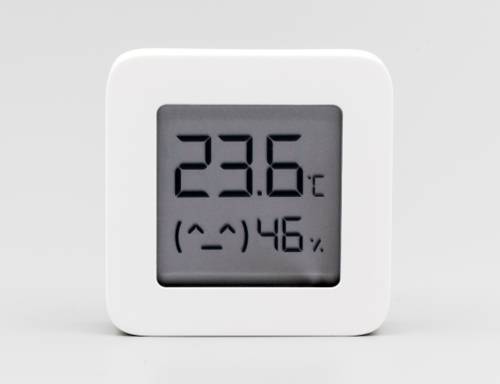
FAQ About Indoor Plant Moisture Monitoring Systems

What are indoor plant moisture monitoring systems?
Indoor plant moisture monitoring systems are devices or tools designed to help plant owners maintain optimal moisture levels in their soil. These systems typically use sensors to detect the moisture content and alert the user when the soil is too dry or too wet, ensuring that plants receive the correct amount of water for their health and growth.

How do moisture sensors for indoor plants work?
Moisture sensors for indoor plants work by measuring the soil's electrical conductivity. Water in the soil conducts electricity, so when the soil moisture is high, the electrical conductivity is increased. The sensor detects these changes and sends data to a display or an app, allowing the user to monitor the soil's moisture level.

What types of indoor plant moisture monitoring systems are available?
There are several types of indoor plant moisture monitoring systems available, including analog soil moisture meters, digital moisture sensors, wireless moisture probes, and smart sensors that connect to mobile applications. These systems range from simple probes that provide immediate readings to advanced smart devices with scheduling and alert functionalities.

Why is it important to monitor the moisture levels of indoor plants?
Monitoring the moisture levels of indoor plants is crucial because both overwatering and underwatering can harm plant health. Overwatering can lead to root rot and fungal infections, while underwatering can cause wilting and nutrient deficiencies. Proper moisture monitoring helps maintain optimal conditions for plant growth.

Can moisture monitoring systems prevent plant diseases?
While moisture monitoring systems alone cannot prevent all plant diseases, they can significantly reduce the risk of water-related issues such as root rot and fungal infections. By providing accurate data on soil moisture, these systems help ensure that plants are neither overwatered nor underwatered, minimizing conditions that promote diseases.

Are there smart moisture monitoring systems for indoor plants?
Yes, there are smart moisture monitoring systems available for indoor plants. These systems often connect to smartphones or other devices via Bluetooth or Wi-Fi, allowing continuous monitoring and providing notifications or alerts if the soil moisture reaches undesired levels. Some smart systems can also integrate with other smart home devices for automated watering schedules.

What is the price range for indoor plant moisture monitoring systems?
The price of indoor plant moisture monitoring systems varies based on features and complexity. Basic analog moisture meters can cost as little as $10 to $20, while more advanced digital or smart sensors can range from $30 to $100 or more. Pricing depends on the brand, technology, and additional features like connectivity and automation.

Do moisture monitoring systems require maintenance?
Most indoor plant moisture monitoring systems require minimal maintenance. Basic maintenance may include battery replacement for digital models, ensuring the cleanliness of the sensor probe, and occasionally recalibrating if the system allows it. Regular checks to ensure the system is functioning properly are recommended.

Can moisture sensors be used for all types of indoor plants?
Moisture sensors can generally be used for all types of indoor plants, although the specific moisture requirements might vary depending on the plant species. It's important to understand the water needs of each plant and to use the sensor as a guide to apply the appropriate watering rather than a one-size-fits-all solution.

Are moisture monitoring systems accurate?
Generally, moisture monitoring systems are accurate enough for regular household use, although the precision can vary by model and brand. High-quality sensors often provide reliable readings, but it's always a good idea to periodically verify the readings by cross-checking with manual inspections or other devices.

Can these systems be used in conjunction with automatic watering systems?
Yes, many moisture monitoring systems can be integrated with automatic watering systems to create a cohesive plant care solution. In smart systems, this integration can be done digitally, allowing automated adjustments to watering schedules based on real-time moisture data, thereby optimizing watering routines and minimizing waste.

What should I consider when buying a moisture monitoring system?
When buying a moisture monitoring system, consider factors such as the type of plants you have, their specific watering needs, the size of your indoor garden, the level of automation you desire, and your budget. Additionally, check for product reviews and features like ease of use, connectivity options, and compatibility with existing smart home devices.

Do moisture monitoring systems come with alerts or notifications?
Many modern moisture monitoring systems come with the ability to send alerts or notifications. Smart systems often connect to mobile apps to provide real-time alerts whenever the soil moisture is outside the desired range, helping users take timely actions to adjust watering as needed.

Can moisture monitoring systems help conserve water?
Yes, moisture monitoring systems can help conserve water by ensuring that plants are watered only when necessary. This prevents overwatering and reduces water waste, contributing to more sustainable indoor gardening practices.

How often should I check moisture levels with a sensor?
While smart sensors provide ongoing monitoring, it’s generally a good practice to check moisture levels with a sensor at least once a week or more frequently if you have plants with higher water needs. Regular checks help ensure plants remain in optimal conditions and allow for prompt adjustments as needed.

Are there alternatives to electronic moisture monitoring systems?
Yes, there are manual methods to check soil moisture, such as the finger test, which involves inserting your finger into the soil to assess moisture, or using a simple wooden dowel that can be inserted into the soil to check for moisture levels. Though less precise, these methods can still provide valuable insight into soil moisture.

Can I use one moisture sensor for multiple plants?
While it is possible to use one sensor for multiple plants by transferring it between pots, each plant's soil conditions can vary greatly, potentially impacting accuracy. For best results, especially when monitoring disparate plant types or those in separate environments, consider using individual sensors for each pot.

How deep should a moisture sensor be placed in the soil?
Moisture sensors should typically be placed about halfway into the soil to the root level, which is often sufficient for most indoor plants. The exact depth may vary depending on the size and type of plant, but it is important to ensure that the sensor is deep enough to accurately measure the moisture level where the majority of roots are present.

Can moisture sensors detect other soil conditions like pH or light levels?
Some advanced soil sensors are designed to measure multiple conditions, including pH and light levels, along with moisture. These multi-functional sensors can provide a more comprehensive view of plant health but are generally more expensive than standard moisture-only sensors.

Is it necessary to recalibrate indoor plant moisture sensors?
Most moisture sensors do not require frequent recalibration, but some models may benefit from recalibration occasionally to maintain accuracy. This is especially relevant if you notice the sensor readings seem off or inconsistent. Always refer to the manufacturer's guidelines for specific calibration instructions.
